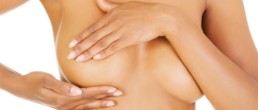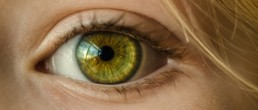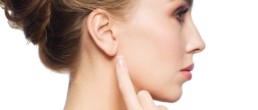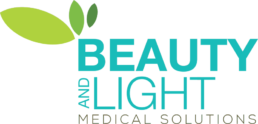PLASTICS
ACCOMPLISH YOUR COSMETIC GOALS WITH PLASTIC SURGERY
To help our patients achieve their ideal appearance, Beauty & Light Medical Solutions offers a wide range of plastic surgery procedures, tailored to their unique needs. Our treatments target different areas of the body, improving proportionality and symmetry, as well as adding contour where the definition is lacking. As a state-of-the-art medical tourism facility, we proudly serve international patients from all over the world, using the latest techniques to deliver personalized care.
PLASTIC PROCEDURES
BREAST
BREAST LIFT
A breast lift surgery involves raising the breasts by removing excess skin and tightening the surrounding tissue to reshape and support the new breast contour giving a more youthful and uplifted look.

After Surgery
Breast lift surgery does not significantly change the size of your breasts or round out the upper part of your breast. If you want your breasts to look fuller, consider breast lift and breast augmentation surgery. If you want smaller breasts, consider combining breast lift and breast reduction surgery.
Candidates
You may be a candidate for breast lift surgery if:
- You are physically healthy.
- You have realistic expectations.
- Your breasts are fully developed.
- You are dissatisfied with your breasts losing shape and volume after pregnancy, weight loss, or with aging.
- You are unhappy with the appearance of your breasts.
- Your breasts are asymmetrical.
- One or both breasts failed to develop normally or have an elongated shape.
Recovery
Your breasts will be wrapped in gauze dressings and an elastic bandage or support bra will minimize swelling and support the breasts as they heal.
It’s necessary to avoid heavy lifting or strenuous exercise while you are recovering. You will probably be able to return to your exercise routine in four to eight weeks.
BREAST REDUCTION
A breast reduction surgery is a procedure to remove excess breast fat, glandular tissue, and skin to achieve a breast size in proportion with your body and to alleviate the discomfort associated with overly large breasts.

After Surgery
The breast reduction surgery will significantly change the size of your breasts and round the top of your chest.
Candidates
Breast reduction is a good option for you if you:
- Are physically healthy.
- Have realistic expectations.
- Are bothered by feeling that your breasts are too large.
- Have breasts that limit your physical activity.
- Experience back, neck, and shoulder pain caused by the weight of your breasts.
- Have shoulder indentations from bra straps.
- Have skin irritation beneath the breast crease.
Recovery
Your breasts will be wrapped in gauze dressings and an elastic bandage or support bra will minimize swelling and support the breasts as they heal.
It’s necessary to avoid heavy lifting or strenuous exercise while you are recovering. You will probably be able to return to your normal routine in four to eight weeks.
BREAST AUGMENTATION
Breast augmentation surgery involves using breast implants to increase the size of your breasts or restore breast volume. Breast augmentation can:
- Increase fullness and projection of your breasts.
- Improve the balance of your figure.
- Enhance your self-image and self-confidence.

After Surgery
Breast augmentation does not correct severely drooping breasts. If you want your breasts to look fuller and to be lifted due to sagging, a breast lift may be required in conjunction with breast augmentation.
Candidates
You may be a candidate for breast augmentation surgery if:
- You have realistic expectations.
- Your breasts are fully developed.
- You are bothered by the feeling that your breasts are too small.
- You are dissatisfied with your breasts losing shape and volume after pregnancy, weight loss, or with aging.
- You are unhappy with the upper part of your breast appearing “empty”.
- Your breasts are asymmetrical.
Recovery
Your breasts will be wrapped in gauze dressings and an elastic bandage or support bra that will minimize swelling and support the breasts as they heal.
It’s necessary to avoid heavy lifting or strenuous exercise while you are recovering. You will probably be able to return to your normal routine in four to eight weeks.
Replacement
Breast implants are not designed to last a lifetime and they need to be replaced. You should plan for an annual examination by our surgical team to evaluate your breast health and implant integrity.
MOMMY MAKEOVER
TUMMY TUCK
Tummy tuck surgery also known as abdominoplasty, removes excess fat and skin and in most cases restores weakened or separated muscles creating an abdominal profile that is smoother and firmer.

What a tummy tuck won't do:
A tummy tuck is not a substitute for weight loss or an appropriate exercise program. A tummy tuck cannot correct stretch marks, although these may be removed if they are located on the areas of excess skin that will be exercised.
Who's a candidate for a tummy tuck?
In general, you may be a good tummy tuck candidate if:
- You are physically healthy and at a stable weight.
- You have realistic expectations.
- You are bothered by the appearance of your abdomen.
What is the tummy tuck recovery like?
During your tummy tuck recovery, a compression garment or elastic bandages may cover treatment areas once your procedure is completed to control swelling and compress the skin to your new body contours.
It’s necessary to avoid heavy lifting or strenuous exercise while you are recovering. You will probably be able to return to your exercise routine in four to eight weeks.
LIPOSUCTION
Liposuction, slims and reshapes specific areas of the body by removing excess fat deposits and improving your body contours and proportion.
Liposuction techniques may be used to reduce localized fat deposits of the:
- Thighs.
- Hips and buttocks.
- Abdomen and waist.
- Upper arms.
- Back.
- Inner knee.
- Chest area.
- Cheeks, chin and neck.
- Calves and ankles.

What a liposuction won't do:
Liposuction is not a treatment for obesity or a substitute for proper diet and exercise. It is also not an effective treatment for cellulite or loose saggy skin.
Liposuction candidates:
Ideal liposuction candidates are:
- Adults within 30% of their ideal weight who have firm, elastic skin and good muscle tone.
- Healthy individuals who do not have a life-threatening illness or medical conditions that can impair healing.
- Individuals with a positive outlook and specific goals in mind for body contouring.
Liposuction recovery:
During your liposuction recovery, a compression garment or elastic bandages may cover treatment areas once your procedure is completed to control swelling and compress the skin to your new body contours.
It’s necessary to avoid heavy lifting or strenuous exercise while you are recovering. You will probably be able to return to your exercise routine in four to eight weeks.
AND MORE:
CHIN SURGERY
The chin surgery consist in reshaping the chin either by enhancement with an implant or reduction surgery on the bone.

What chin surgery will do:
Chin implants can increase the size and projection of a chin that is not in proportion with the forehead and mid-face.
Chin surgery candidates:
Chin surgery is suitable for those which consider that their chin is small or big.
Chin surgery recovery:
Bandages or dressings will be applied to keep the surgical site clean and to support the position of the implant during initial healing once your procedure is finished. It’s necessary to avoid heavy lifting or strenuous exercise while you are recovering. You will probably be able to return to your exercise routine in 2 to 3 weeks.
EYELID SURGERY
Eyelid surgery, or blepharoplasty, is a surgical procedure to improve the appearance of the eyelids.
Specifically, eyelid surgery can treat:
- Loose or sagging skin that creates folds or disturbs the natural contour of the upper eyelid, sometimes impairing vision.
- Excess fatty deposits that appear as puffiness in the eyelids.
- Bags under the eyes.
- Drooping lower eyelids that reveal white below the iris.
- Excess skin and fine wrinkles of the lower eyelid.

Eyelid surgery candidates:
In general, good candidates for eyelid surgery include:
- Healthy individuals who do not have a life threatening illness or medical conditions that can impair healing.
- Individuals with a positive outlook and specific goals in mind for eyelid surgery.
- Individuals without serious eye conditions.
Eyelid surgery recovery:
Lubricating ointment and cold compresses may be applied, and in some cases your eyes may be loosely covered with gauze, after your procedure is completed. Initial healing may include some swelling, bruising, irritation or dry eyes.
It’s necessary to avoid heavy lifting or strenuous exercise while you are recovering. You will probably be able to return to your normal routine in 2 to 3 weeks.
FACELIFT
A facelift is a surgical procedure that improves visible signs of aging in the face and neck, such as:
- Sagging in the middle of your face.
- Deep creases below the lower eyelids and along the nose.
- Fat that has fallen or has disappeared.
- Loss of skin tone in the lower face that creates jowls and excess fatty deposits under the chin and jaw.
Facelift candidates:
In general, good candidates for a facelift include:
- Healthy individuals who do not have medical conditions that impair healing.
- Individuals with a positive outlook and realistic expectations.
Facelift recovery:
During your facelift recovery, a bandage might be placed around your face to minimize swelling and bruising once your procedure is completed. It’s necessary to avoid heavy lifting or strenuous exercise while you are recovering. You will probably be able to return to your exercise routine in four weeks approximately.
OTOPLASTY
Otoplasty, is a surgical procedure that consist in improving the shape, position or proportion of the ear.

Otoplasty candidates:
You may be a good candidate for ear surgery if you do not have a life-threatening illness or medical conditions that can impair healing.
Otoplasty recovery:
Your ears will be covered with bandages that will minimize swelling and support the ears as they heal. It’s necessary to avoid heavy lifting or strenuous exercise while you are recovering. You will probably be able to return to your exercise routine in four weeks approximately.
RHINOPLASTY
Rhinoplasty enhances facial harmony and the proportions of your nose. It can also correct impaired breathing caused by structural defects in the nose.

After surgery:
Rhinoplasty surgery can change:
- Nose size in relation to facial balance.
- Nasal tip that is enlarged or bulbous, drooping, upturned or hooked.
- Nostrils that are large, wide, or upturned.
Rhinoplasty candidates:
You may be a good candidate for rhinoplasty if:
- Your facial growth is complete.
- You are physically healthy.
- You have a positive outlook and realistic goals in mind for the improvement of your appearance.
Rhinoplasty recovery:
During your rhinoplasty recovery, a splint and/or packing will likely be placed inside your nose and a splint or bandages placed on the outside to support and protect the new structures during initial healing. While initial swelling subsides within a few weeks, it may take up to a year for your new nasal contour to fully refine.
PLASTIC PROCEDURES
BREAST
BREAST LIFT
A breast lift surgery involves raising the breasts by removing excess skin and tightening the surrounding tissue to reshape and support the new breast contour giving a more youthful and uplifted look.

After Surgery
Breast lift surgery does not significantly change the size of your breasts or round out the upper part of your breast. If you want your breasts to look fuller, consider breast lift and breast augmentation surgery. If you want smaller breasts, consider combining breast lift and breast reduction surgery.
Candidates
You may be a candidate for breast lift surgery if:
- You are physically healthy.
- You have realistic expectations.
- Your breasts are fully developed.
- You are dissatisfied with your breasts losing shape and volume after pregnancy, weight loss, or with aging.
- You are unhappy with the appearance of your breasts.
- Your breasts are asymmetrical.
- One or both breasts failed to develop normally or have an elongated shape.
Recovery
Your breasts will be wrapped in gauze dressings and an elastic bandage or support bra will minimize swelling and support the breasts as they heal.
It’s necessary to avoid heavy lifting or strenuous exercise while you are recovering. You will probably be able to return to your exercise routine in four to eight weeks.
BREAST REDUCTION
A breast reduction surgery is a procedure to remove excess breast fat, glandular tissue, and skin to achieve a breast size in proportion with your body and to alleviate the discomfort associated with overly large breasts.

After Surgery
The breast reduction surgery will significantly change the size of your breasts and round the top of your chest.
Candidates
Breast reduction is a good option for you if you:
- Are physically healthy.
- Have realistic expectations.
- Are bothered by feeling that your breasts are too large.
- Have breasts that limit your physical activity.
- Experience back, neck, and shoulder pain caused by the weight of your breasts.
- Have shoulder indentations from bra straps.
- Have skin irritation beneath the breast crease.
Recovery
Your breasts will be wrapped in gauze dressings and an elastic bandage or support bra will minimize swelling and support the breasts as they heal.
It’s necessary to avoid heavy lifting or strenuous exercise while you are recovering. You will probably be able to return to your normal routine in four to eight weeks.
BREAST AUGMENTATION
Breast augmentation surgery involves using breast implants to increase the size of your breasts or restore breast volume. Breast augmentation can:
- Increase fullness and projection of your breasts.
- Improve the balance of your figure.
- Enhance your self-image and self-confidence.

After Surgery
Breast augmentation does not correct severely drooping breasts. If you want your breasts to look fuller and to be lifted due to sagging, a breast lift may be required in conjunction with breast augmentation.
Candidates
You may be a candidate for breast augmentation surgery if:
- You have realistic expectations.
- Your breasts are fully developed.
- You are bothered by the feeling that your breasts are too small.
- You are dissatisfied with your breasts losing shape and volume after pregnancy, weight loss, or with aging.
- You are unhappy with the upper part of your breast appearing “empty”.
- Your breasts are asymmetrical.
Recovery
Your breasts will be wrapped in gauze dressings and an elastic bandage or support bra that will minimize swelling and support the breasts as they heal.
It’s necessary to avoid heavy lifting or strenuous exercise while you are recovering. You will probably be able to return to your normal routine in four to eight weeks.
Replacement
Breast implants are not designed to last a lifetime and they need to be replaced. You should plan for an annual examination by our surgical team to evaluate your breast health and implant integrity.
MOMMY MAKEOVER
TUMMY TUCK
Tummy tuck surgery also known as abdominoplasty, removes excess fat and skin and in most cases restores weakened or separated muscles creating an abdominal profile that is smoother and firmer.

What a tummy tuck won't do:
A tummy tuck is not a substitute for weight loss or an appropriate exercise program. A tummy tuck cannot correct stretch marks, although these may be removed if they are located on the areas of excess skin that will be exercised.
Who's a candidate for a tummy tuck?
In general, you may be a good tummy tuck candidate if:
- You are physically healthy and at a stable weight.
- You have realistic expectations.
- You are bothered by the appearance of your abdomen.
What is the tummy tuck recovery like?
During your tummy tuck recovery, a compression garment or elastic bandages may cover treatment areas once your procedure is completed to control swelling and compress the skin to your new body contours.
It’s necessary to avoid heavy lifting or strenuous exercise while you are recovering. You will probably be able to return to your exercise routine in four to eight weeks.
LIPOSUCTION
Liposuction, slims and reshapes specific areas of the body by removing excess fat deposits and improving your body contours and proportion.
Liposuction techniques may be used to reduce localized fat deposits of the:
- Thighs.
- Hips and buttocks.
- Abdomen and waist.
- Upper arms.
- Back.
- Inner knee.
- Chest area.
- Cheeks, chin and neck.
- Calves and ankles.

What a liposuction won't do:
Liposuction is not a treatment for obesity or a substitute for proper diet and exercise. It is also not an effective treatment for cellulite or loose saggy skin.
Liposuction candidates:
Ideal liposuction candidates are:
- Adults within 30% of their ideal weight who have firm, elastic skin and good muscle tone.
- Healthy individuals who do not have a life-threatening illness or medical conditions that can impair healing.
- Individuals with a positive outlook and specific goals in mind for body contouring.
Liposuction recovery:
During your liposuction recovery, a compression garment or elastic bandages may cover treatment areas once your procedure is completed to control swelling and compress the skin to your new body contours.
It’s necessary to avoid heavy lifting or strenuous exercise while you are recovering. You will probably be able to return to your exercise routine in four to eight weeks.
AND MORE:
CHIN SURGERY
The chin surgery consist in reshaping the chin either by enhancement with an implant or reduction surgery on the bone.

What chin surgery will do:
Chin implants can increase the size and projection of a chin that is not in proportion with the forehead and mid-face.
Chin surgery candidates:
Chin surgery is suitable for those which consider that their chin is small or big.
Chin surgery recovery:
Bandages or dressings will be applied to keep the surgical site clean and to support the position of the implant during initial healing once your procedure is finished. It’s necessary to avoid heavy lifting or strenuous exercise while you are recovering. You will probably be able to return to your exercise routine in 2 to 3 weeks.
EYELID SURGERY
Eyelid surgery, or blepharoplasty, is a surgical procedure to improve the appearance of the eyelids.
Specifically, eyelid surgery can treat:
- Loose or sagging skin that creates folds or disturbs the natural contour of the upper eyelid, sometimes impairing vision.
- Excess fatty deposits that appear as puffiness in the eyelids.
- Bags under the eyes.
- Drooping lower eyelids that reveal white below the iris.
- Excess skin and fine wrinkles of the lower eyelid.

Eyelid surgery candidates:
In general, good candidates for eyelid surgery include:
- Healthy individuals who do not have a life threatening illness or medical conditions that can impair healing.
- Individuals with a positive outlook and specific goals in mind for eyelid surgery.
- Individuals without serious eye conditions.
Eyelid surgery recovery:
Lubricating ointment and cold compresses may be applied, and in some cases your eyes may be loosely covered with gauze, after your procedure is completed. Initial healing may include some swelling, bruising, irritation or dry eyes.
It’s necessary to avoid heavy lifting or strenuous exercise while you are recovering. You will probably be able to return to your normal routine in 2 to 3 weeks.
FACELIFT
A facelift is a surgical procedure that improves visible signs of aging in the face and neck, such as:
- Sagging in the middle of your face.
- Deep creases below the lower eyelids and along the nose.
- Fat that has fallen or has disappeared.
- Loss of skin tone in the lower face that creates jowls and excess fatty deposits under the chin and jaw.
Facelift candidates:
In general, good candidates for a facelift include:
- Healthy individuals who do not have medical conditions that impair healing.
- Individuals with a positive outlook and realistic expectations.
Facelift recovery:
During your facelift recovery, a bandage might be placed around your face to minimize swelling and bruising once your procedure is completed. It’s necessary to avoid heavy lifting or strenuous exercise while you are recovering. You will probably be able to return to your exercise routine in four weeks approximately.
OTOPLASTY
Otoplasty, is a surgical procedure that consist in improving the shape, position or proportion of the ear.

Otoplasty candidates:
You may be a good candidate for ear surgery if you do not have a life-threatening illness or medical conditions that can impair healing.
Otoplasty recovery:
Your ears will be covered with bandages that will minimize swelling and support the ears as they heal. It’s necessary to avoid heavy lifting or strenuous exercise while you are recovering. You will probably be able to return to your exercise routine in four weeks approximately.
RHINOPLASTY
Rhinoplasty enhances facial harmony and the proportions of your nose. It can also correct impaired breathing caused by structural defects in the nose.

After surgery:
Rhinoplasty surgery can change:
- Nose size in relation to facial balance.
- Nasal tip that is enlarged or bulbous, drooping, upturned or hooked.
- Nostrils that are large, wide, or upturned.
Rhinoplasty candidates:
You may be a good candidate for rhinoplasty if:
- Your facial growth is complete.
- You are physically healthy.
- You have a positive outlook and realistic goals in mind for the improvement of your appearance.
Rhinoplasty recovery:
During your rhinoplasty recovery, a splint and/or packing will likely be placed inside your nose and a splint or bandages placed on the outside to support and protect the new structures during initial healing. While initial swelling subsides within a few weeks, it may take up to a year for your new nasal contour to fully refine.
INITIAL CONSULTATION FOR BREAST SURGERY
Our team can perform an evaluation of the shape and size of your breasts via e-mail to conduct the consultation process more efficiently. After examining the condition of your breasts, our team can accurately recommend a procedure. The whole process can be completed from the comfort of your own home so that you only travel to our facilities once you have an exact quote and a clear picture of what procedure will be performed.

